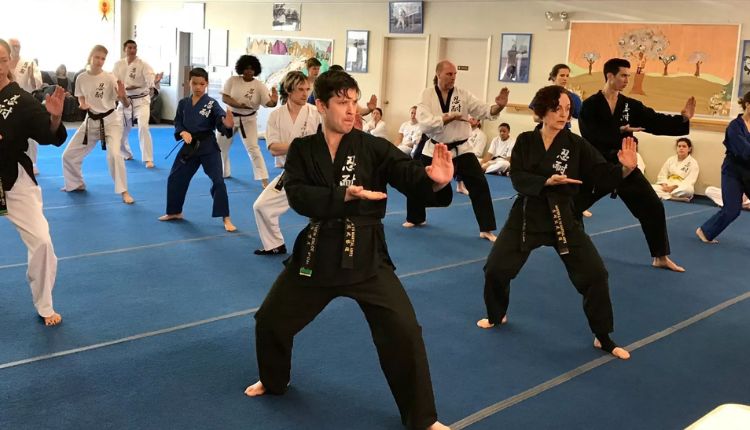Modern life moves fast. Between work deadlines, constant notifications, and the endless pressure to perform, adults are experiencing record levels of stress. Many turn to meditation or yoga as a solution—but what if the key to calm isn’t stillness at all? What if movement, discipline, and controlled intensity could deliver the same serenity people seek in silence?
That’s where martial arts come in. Once thought of mainly as a combat discipline or sport, martial arts are increasingly being recognized as a powerful tool for emotional regulation and stress management.
The Paradox of Movement for Calm
It might seem counterintuitive—how can something that involves punching, kicking, and sweating lead to inner peace? The answer lies in how the body and mind interact. Physical activity releases endorphins, the brain’s natural mood elevators, and reduces cortisol, the primary stress hormone. But martial arts go beyond simple exercise.
Unlike running or weightlifting, martial arts engage both physical and mental systems simultaneously. Every movement demands presence—if your mind drifts, you lose focus, balance, or form. This enforced mindfulness mirrors meditation, but through motion rather than stillness.
In other words, martial arts become moving meditation.
Building Discipline and Focus in a Distracted World
One of the biggest causes of stress in modern life is distraction. Constant multitasking and digital overload keep the brain in a perpetual state of alert. Martial arts cut through that noise. Training requires singular focus—learning a sequence, mastering a stance, or anticipating a sparring partner’s movement.
That focus translates into mental discipline. Over time, practitioners develop better concentration, patience, and the ability to regulate emotion under pressure. It’s a habit that carries into daily life—helping people remain centered even when challenges arise.
The Power of Controlled Challenge
Unlike meditative practices that emphasize calm through quiet, martial arts teach calm through controlled challenge. Students learn to manage stress under dynamic conditions—being out of breath, facing an opponent, or pushing past physical fatigue.
This builds what psychologists call stress inoculation: the ability to stay composed in high-pressure situations because your nervous system has been trained not to overreact.
The mat becomes a microcosm of life. You make mistakes, recover, adapt, and grow—all while learning to control fear and frustration. Over time, this resilience becomes second nature.
Mind-Body Integration: The Missing Piece in Modern Stress Relief
Many adults treat the mind and body as separate systems—calming the mind with meditation and strengthening the body at the gym. Martial arts erase that divide. The breathing techniques, posture alignment, and energy control practiced in disciplines like Taekwondo, Judo, or Aikido directly influence the nervous system’s balance.
Regular training improves heart rate variability, reduces resting tension, and promotes better sleep—all of which are essential for managing chronic stress. Practitioners often describe a feeling of balance, not just physically but emotionally, after consistent training.
Community: The Unsung Source of Calm
Stress often thrives in isolation. While meditation is typically solitary, martial arts provide community—a shared experience that builds belonging and support. Students train together, celebrate progress, and hold each other accountable.
This social connection amplifies the stress-relief benefits. Studies consistently show that having strong social bonds reduces anxiety and improves emotional resilience. Martial arts schools, in this sense, become modern wellness hubs—spaces where people challenge themselves and find camaraderie at the same time.
The Emotional Release Factor
Pent-up emotion contributes significantly to stress, and many people lack healthy outlets to express frustration or anger. Martial arts offer a constructive channel for emotional release. Striking a pad or mastering a new technique provides a physical way to process tension, leading to a clear, refreshed mind afterward.
This isn’t aggression—it’s controlled catharsis. By expressing emotion through structured movement, practitioners release pressure instead of suppressing it.
Meditation and Martial Arts: Two Paths to the Same Goal
It’s not a question of one versus the other. Meditation and martial arts share the same goal: inner stability. Where meditation uses stillness to cultivate awareness, martial arts use motion to achieve focus and balance. For many adults who struggle with sitting still or clearing their minds, martial arts provide a more accessible and engaging way to reach that same state of calm.
For those living in high-altitude, high-energy areas like martial arts Denver communities, this approach to mindfulness through movement resonates deeply. It fits the lifestyle of people who crave action but also seek grounding in their everyday lives.
Conclusion: The Calm Within the Chaos
In a world where stress is often unavoidable, finding peace through controlled intensity might be one of the most effective solutions. Martial arts don’t just train the body to fight—they train the mind to yield, adapt, and remain calm under pressure.
Meditation teaches stillness, but martial arts teach strength in motion—and sometimes, that’s exactly what the modern mind needs most.






